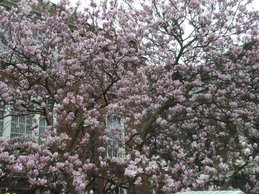As more buildings are lit up at night, bats are in trouble - because they need darkness to feed. Now campaigners are stepping in to help them  Bats can see, but only in low-light conditions.
Bats can see, but only in low-light conditions.
Britain's inky nights are disappearing - and with them their most famous inhabitant, the bat. Researchers have found that growing light pollution is now playing havoc with the country's flying mammals.
As a result, campaigners are now preparing guidelines that will restrict the lighting of public buildings, shops and housing developments. Without dark nights, bats will suffer, they say.
The problem stems from Britain's growing habit of lighting up its public buildings. Bridges, grand houses, parks and shopping malls are today often ablaze with light for long periods every night: boosting security, enhancing dramatic effect ... and dazzling bats.
Many people think bats are blind, but this is not so, said Alison Fure, an ecologist and bat expert: 'They can see quite well. They don't necessarily see colour, but they have got a lot of rods in their retinas, which let in lots of light [so] they can see in very low light conditions.'
Hence the dramatic declines in bat populations found in lit-up areas, especially near illuminated buildings and bridges where bats have nesting areas, or near rivers and waterways where they have feeding grounds. Bats cannot judge when it is dark enough to safely emerge from their resting places to hunt for insects.
Eventually, when bats do venture out - starved and desperate for food - they find they have missed the most plentiful feeding times, said Carol Williams, a project officer for the Bat Conservation Trust. 'They have to go for it, but the peak time of insect abundance is dusk and a little after dusk, and if they do emerge it's more than likely they miss the peak food supply,' said Williams.
Major problem areas include old docklands, wharfs and canals of London, Bristol, Birmingham and Manchester. These lay undisturbed for years, providing lovely dingy homes for bats. Now these areas are being developed to provide brightly lit, busy homes and cafes: great for humans, but bad for flying mammals.
Bats have even been scared away by more sedate and atmospheric lighting in areas like the River Thames in west London. Recently campaigners fought off plans to light up Richmond Bridge because of the danger to wildlife...





